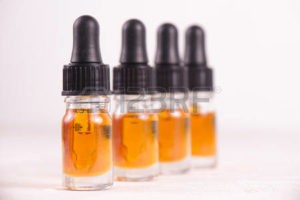
Recently Diagnosed or Relapsed? Stop Looking For a Miracle Cure, and Use Evidence-Based Therapies To Enhance Your Treatment and Prolong Your Remission
Multiple Myeloma an incurable disease, but I have spent the last 25 years in remission using a blend of conventional oncology and evidence-based nutrition, supplementation, and lifestyle therapies from peer-reviewed studies that your oncologist probably hasn't told you about.
Click the orange button to the right to learn more about what you can start doing today.
- You are here:
- Home »
- Blog »
- Multiple Myeloma »
- Multiple Myeloma Relapse? Dec. M-spike, Inc. Freelight Chains…
Multiple Myeloma Relapse? Dec. M-spike, Inc. Freelight Chains…

That type of patient could potentially be watched for a few months longer until we do have symptoms. Conversely, if the patient has symptomatic disease…
Hi Toni-
- MM Survivor
- MM Coach
- Director PeopleBeatingCancer
Recommended Reading:
Biochemical Relapse of Multiple Myeloma
“Ajai Chari, MD: In trying to decide how to treat a patient with relapse, the first question is, where is this patient on that continuum of purely biochemical relapse to fulminant disease? Not everybody with mild biochemical relapse, which isn’t even fully detectable or fully measurable by IMWG (International Myeloma Working Group) response criteria, needs immediate therapy. That type of patient could potentially be watched for a few months longer until we do have symptoms. Conversely, if the patient has symptomatic disease, we need to obviously start therapy immediately, regardless of whether or not it’s measurable.
It’s important to know that for some patients who have a heavy chain component (an IgG [immunoglobulin G] kappa M-spike of 1.3 at the time of initial diagnosis), by the time they relapse, they may have that concept or free light chain escape. They only have kappa light chain disease. So, it’s important that community doctors check all of those myeloma labs in patients on maintenance therapy, so that we’re not missing that type of relapse.
If somebody had this symptomatic relapse, as our patient has, then I think the first question is, what kind of regimen do we use? Fortunately, in myeloma, we’ve had a plethora of relapse studies. In fact, we’ve had 7 phase III studies and 1 randomized phase II study. It’s unprecedented, I think, in oncology to have so many studies to choose from—phase III, randomized, high-quality studies that have all led to the approval of these agents…
I bring up all of those factors because we really can’t compare directly to median PFS, for example, across all of these studies. And although it’s intellectually the easiest to do, it’s also intellectually the laziest to do. What we really need to do is look at hazard ratios, which at least gives you the relative value added within each study for the novel agent versus conventional option. And what’s interesting is, when you look at these hazard ratios for all of these studies, they pretty much all line up in this 0.6 to 0.7 range with 1 exception—that’s daratumumab. There is daratumumab/RD (lenalidomide and dexamethasone) or daratumumab/VD. In this case, reflecting on the CASTOR study that compared daratumumab/VD versus VD, the hazard ratio was quite impressive—0.39 (or, the other way of saying that is 61% reduction in the risk of progression or death).
That’s quite impressive and, admittedly, the follow-up is not going to be as long as those other studies. So, we don’t yet see OS benefit. That’s going to require longer follow up. But, I think that’s why, for that reason, people are so interested in daratumumab-containing regimens. These hazard ratios are quite impressive. Again, it’s not to say that those other regimens may not be appropriate, and they’re all excellent regimens. They all will work very well. But, if you had to pick what would be the best option in terms of evidence-based, that’s probably one of the most compelling. And so, that would be the approach for this patient, given that she was in lenalidomide maintenance failure…
We need to think about this patient’s age, frailty, comorbidities, neuropathy rates, and renal function—and those are host factors. The second thing to consider is the disease factors, which are not only related to the burden of the disease and symptoms, but also biology.
Is there a molecular risk? And lastly, we need to think about therapies, including what they had been treated with before. How well did they respond? What toxicities did they have? Is this therapy going to be parenteral or oral? Is it going to be a combination or single-agent regimen? What is the cost of this drug, both to the healthcare system and also to the patient (in terms of out-of-pocket costs)? I think we have a lot of factors to consider, and, at the end of the day, this is why we say medicine is an art and not a science. You can have these evidence-based studies with hazard ratios, but maybe you have to throw all that out the door when you see this patient in front of you (where things don’t apply). I think it’s nice to have evidence, though, to have so many choices so that you can pick the right combination for the right patient.”


